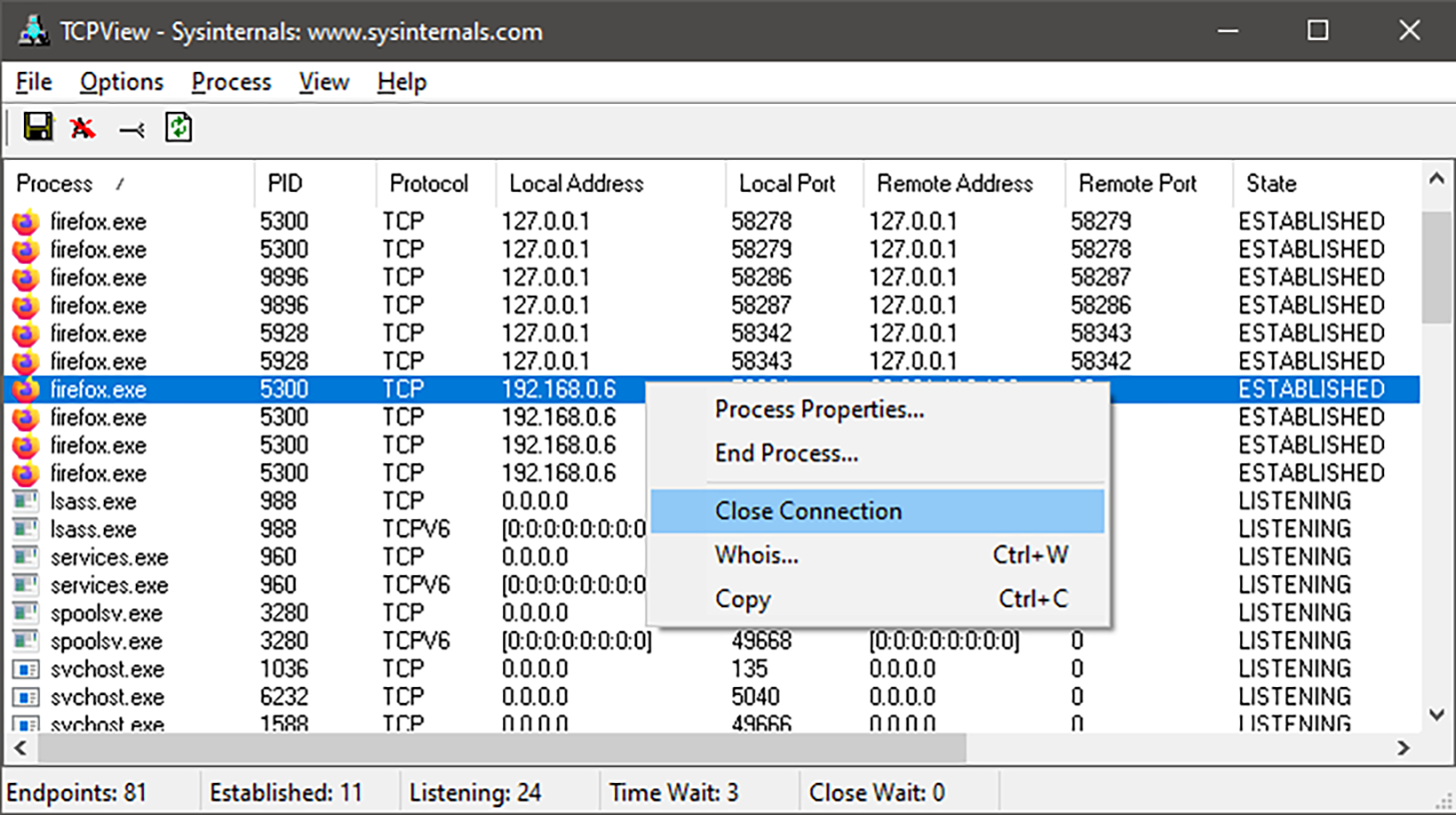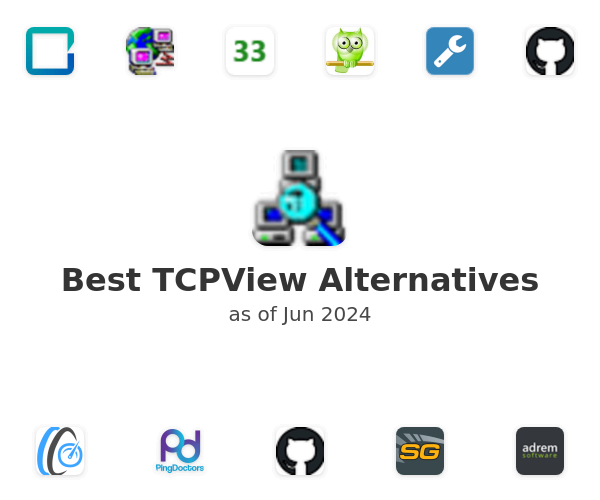

The remote address will be listed as "*.*" since the UDP protocol does not support connections. For example, if a program opens UDP port 3200 and specifies local IP address 0.0.0.0, you will see a line in the static view with the name of the process, UDP as the protocol, and "0.0.0.0:3200" as the local address. The static view shows you a snapshot of the existing TCP/IP endpoints on the system. You can use the tab key to move between views.


Local IP addresses can be specified in three different ways: The IP address of course must be one local to the computer. A TCP session is initiated by a process allocating a TCP endpoint (object) and assigning it an IP address and port number. TCP offers connect-oriented, reliable communications. This section provides a brief (and simplified) description of TCP and UDP. TCP/IP actually consists of three protocols: TCP (Transmission Control Protocol), UDP (Unreliable Datagram Protocol) and IP (Internet Protocol). Filter the data captured so that you only see accesses performed by a specific process, or that involve particular local or remote addresses.Save TCP/IP activity logs and connection information to file.Watch an application's TCP/IP activity in real-time.Obtain detailed statistics on the amount of data sent and received over a connection.See what remote network addresses suspicious applications are accessing.Determine which process has an address opened.TCPView Professional’s capabilities let you:
#Tcpview endpoints professional
Finally, TCPView Professional offers a range of configuration options that let you auto-refresh its display, save output to a file, and filter and highlight entries by process, IP address, or port. TCPView Professional also lets you see the amount of data sent and received over a network connection, which makes it a useful tool for performance diagnostics. These features make TCPView Professional a uniquely powerful tool for networking and application troubleshooting. TCPView Professional also lets you see TCP/IP activity by process in real-time, a feature not available with any other utility.
#Tcpview endpoints windows
Unlike builtin TCP/IP monitoring tools that come with Windows (such as netstat), TCPView Professional shows you which process is associated with each TCP/IP address, making it easy to determine what application is responsible for specific connections and activity. TCPView Professional allows you to monitor TCP/IP network activity on Windows NT 4.0, Windows 2000, Windows XP, Windows Server 2003, and Windows 9x systems. Searching.ġ0 Saving and Printing.ġ1 Using the Clipboard. Showing Only Connected Endpoints.Ĭontrolling the Refresh Rate.


 0 kommentar(er)
0 kommentar(er)
